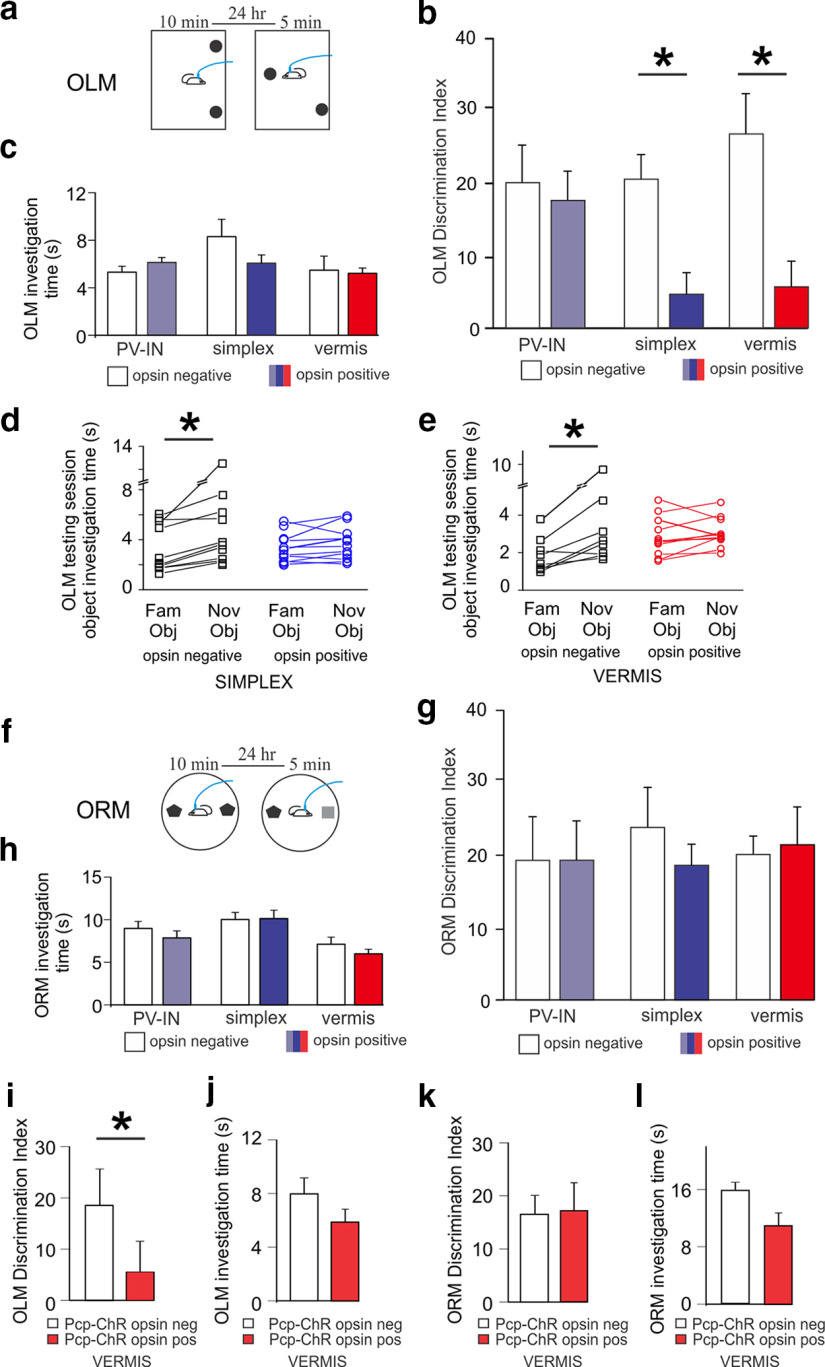Figure 1.
Optogenetic excitation of the cerebellar cortex disrupts performance specifically on a spatial memory task. a, Schematic of OLM task. b, DI of novel object location. Cerebellar stimulated animals showed impaired novel object-location discrimination. *p < 0.05 (Mann–Whitney). c, Total time spent investigating objects during the testing day on the OLM task. Overall investigation was similar between opsin-negatives and -positives. d, Time spent investigating individual objects during OLM testing session in simplex-targeted animals. Opsin-negatives spent significantly more time investigating the novel (moved) object, whereas opsin-positive simplex-targeted animals did not. *p < 0.05 (paired t test). e, Same as in d, but for vermis targeted. f-h, Same as in a-c, but for ORM task. No difference between groups was observed for ORM discrimination of novel object identity nor investigation time. i-l, Results from an additional cohort of vermis-targeted Pcp-ChR animals replicating the (i) impaired OLM DI with no reduction in (j) OLM investigation time, (k) ORM DI, or (l) ORM investigation time. *p < 0.05 (Mann–Whitney). PV-IN, Stimulation of hippocampal PV-expressing interneurons. No effect was seen on OLM or ORM when stimulating hippocampal PV-INs, matching previous reports.

